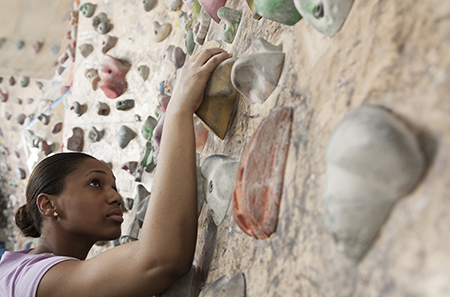More often than not, people come to a point in their academic careers where they hit a wall; some of us just do it more literally than others. What started out as a strange niche sport for people living on the fringe of society has quickly become a fast-growing sport in America. The first indoor climbing gym opened in 1987, and by the end of 2016 there were 414 commercial climbing gyms in America. The growth of the sport is not surprising.
Americans are increasingly interested in outdoor recreation. What does surprise me is the sheer number of researchers embracing the sport. This became immediately apparent when I began my graduate program and started to recognize climbers from the gym around campus. So why is it that rock climbing appeals to so many researchers? I have a few ideas on the matter.
Scientists love jargon.
We can deny it, and say that we want to become more effective scientific communicators. However, at the end of the day, we enjoy throwing around our acronyms, and showing that we belong in academia by using the esoteric language that science is built on. Now imagine the joy of discovering the whole new body of jargon that rock climbing provides: crimp, dyno, smear. Saying “CRISPR” will elicit the same furrowed brow from your layman.
Scientists love problem solving.
More importantly, rock climbing appeals to the problem-solving nature of a researcher. An indoor climbing wall is covered with specific routes that are marked with tape or color-coded. If you wander over to the bouldering area — where climbing is done without ropes — people will refer to these routes as problems, and they will call a route they can’t climb without falling a project. I’m sure you can already see the parallels. When climbing a project, you will troubleshoot moves on the route until you finally get to the top without falling. It is immensely satisfying to have an experiment finally work after endless rounds of troubleshooting, and that emotion physically manifests in climbing by finally reaching the top of the wall.
Exercise is a natural coping mechanism.
Exercise can ease the emotional struggles that research presents. A recent study of students attending universities in Flanders, Belgium, found that one third of students are at risk of developing a common psychiatric disorder. This underlines the importance of taking steps to promote mental health. Countless studies have shown that exercise can have antidepressant effects. That, combined with the hint of adrenaline that rock climbing provides, is the best recipe for getting over a bad day in the lab.
My hope is that the next time you hit a wall it will be at the gym. Come join the growing army of academic climbers. We have problems you can solve.
